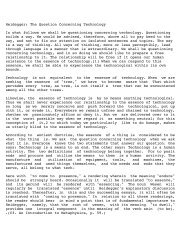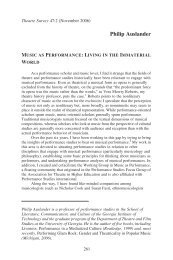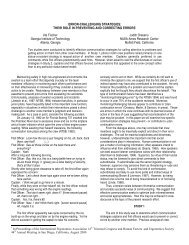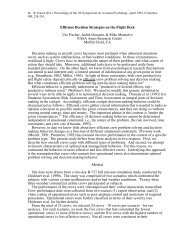INTERACTION DESIGN PRINCIPLES FOR INTERACTIVE ...
INTERACTION DESIGN PRINCIPLES FOR INTERACTIVE ...
INTERACTION DESIGN PRINCIPLES FOR INTERACTIVE ...
Create successful ePaper yourself
Turn your PDF publications into a flip-book with our unique Google optimized e-Paper software.
Source: Human Factors International, 2001.<br />
4.3.6 Video<br />
The ability to deliver video over the Web is a key component to iTV experiences<br />
based on a PC platform such as the Microsoft Media Center. However, video is the most<br />
challenging content to deliver via the Web, as one second of uncompressed NTSC<br />
requires approximately 27 megabytes of disk storage space (Lynch & Horton, 2002).<br />
The Moving Pictures Expert Group [MPEG] (http://www.chiariglione.org/mpeg)<br />
has defined a range of different video compression standards for different purposes. The<br />
MPEG standards are all about interoperability. In particular, MPEG4 is a standard<br />
designed especially for Internet streaming and synchronized multimedia. According to<br />
Bouthillier, MPEG4 is a “container for all kinds of media objects (images, text, video,<br />
animation, interactive elements like buttons and imagemaps, etc) and a way to<br />
choreograph them into a synchronized, interactive presentation” (2004). Therefore,<br />
MPEG4 is particularly useful for iTV applications that provide synchronous content such<br />
as timed overlays and on-screen prompts.<br />
The MPEG4 standard is designed to work well across a range of bandwidths.<br />
MPEG4 also defines standard ways to represent virtually any unit of sound, video, or<br />
multimedia content – called “media objects” – which can be recorded with a camera or<br />
created by a computer. These objects can then be manipulated in a variety of ways by the<br />
broadcaster or the viewer (Gawlinski, 2003).<br />
4.3.7 World Wide Web Consortium (W3C)<br />
The W3C (http://www.w3.org) is a consortium that produces standards for the<br />
World Wide Web. The W3C develops interoperable technologies (specifications,<br />
guidelines, software, and tools) with the goal of leading the Web to its full potential.<br />
98














